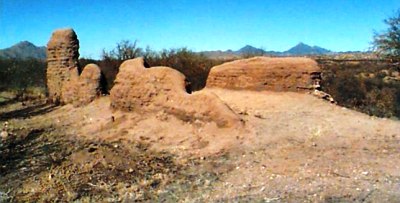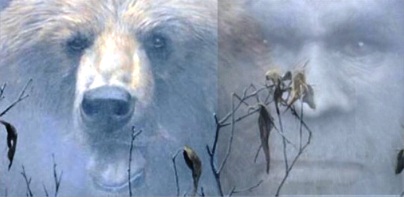The North American Wood Ape Conservancy has long advocated the position that a large upright primate exists in the most remote confines of Texas, Oklahoma, Arkansas, and Louisiana, particularly the region where those states adjoin. However, it cannot be denied that popular culture strongly identifies Western Canada and the heavily forested parts of the Pacific Northwest as the most likely abode of the sasquatch, or wood ape. Certainly, legends and more contemporary accounts from other parts of North America have been recorded, but reports originating south of the U.S. border are rare.
While this may be considered to be a function of both language differences and a less technologically connected populace, it is probably safe to say that the wood ape is generally visualized as a creature of the higher latitudes.
The following highlighted passages were taken from the writings of one of the Jesuit missionaries who worked in the villages of the Province of Sonora in the eighteenth century. As described by Brown in The Grizzly in the Southwest, eighteenth-century Sonora extended “northward on the west side to the Sierra Madre from Cajeme (now Ciudad Obregon), near the California Gulf coast, to Tucson,” an ecologically diverse area of deserts, semiarid grasslands, and mountains comprising the northern portion of the modern Mexican state of Sonora and the southern portion of Arizona.

Father Ignaz Pfefferkorn (b. 1725), a German Jesuit, labored among the Pima Indians from 1756 to 1767. Following the expulsion of his Order from Spanish dominions, he penned a Descripción de la Provincia de Sonora, first published in German (Beschreibung del Landschaft Sonora) in 1795, and later translated into Spanish and English. Because of their experiences and close observations of the geography and the different people who lived in the provinces, the reports and letters of missionaries provide valuable information for historians and anthropologists. Pfefferkorn is considered an extremely reliable and creditable observer, and his writings are widely cited by historians.

While journals and reports of European (and American) explorers, surveyors, travelers, and others were often extremely detailed and trustworthy, early accounts of wildlife written by Europeans could sometimes be rather vague. For example, it was not uncommon to describe several different kinds of bears based on color. In his discussion of the animals of Sonora, Pfefferkorn wrote:
Of the Sonora bears some have black hair, others dark grey, and the smallest number are a reddish color. These last are the most cruel and harmful, according to the statements of the herdsmen. The herdsmen who often have the opportunity on the field and in the bush to observe the natural impulses of animals tell also that the cinnamon bears eagerly go after ants. … Hence the Spaniards in Sonora call the reddish bear “oso hormiguero” [ant bear]. (Pfefferkorn 1949:107)
There were, of course, only two species of bear in the Province of Sonora during the eighteenth century. The “cinnamon bear” was almost certainly the grizzly (Ursus arctos horriblis), a species few people realize once existed at such southerly latitudes.
Much of Pfefferkorn’s book features information related by indigenous tribal members. In relating descriptions of bear depredations, Pfefferkorn may have inadvertently recorded some of the earliest accounts of wood ape interactions with humans. It is likely that, as he noted the following Indian reports, he presumed they were talking about grizzly bear activity, as did Brown in The Grizzly in the Southwest. That certainly appears to be the case in the first sentence. However, it is also possible that the creature described by some of the Indians in the remainder of the passage was the wood ape, not the predominantly diurnal grizzly bear.

Pfefferkorn wrote:
Bears are a special menace to stock raising, for they eat many a calf, and, if no smaller prey falls into their clutches, they will attack even horses, cows, and oxen. They delight especially in eating maize as long as it is still tender and soft. Woe to the field if a hungry bear breaks into it at night. He eats as much as he can and makes off with as much as he can grasp and carry in his mighty arms. In so doing he ruins even more of the field by breaking it down and treading upon it. The inhabitants of the country assert that a bear defends himself by throwing stones when one attempts to chase him away and that a stone hurled from his paws comes with much greater force than one thrown from the hand of the strongest man. This seems the more remarkable because the bear is supposed to throw the stones backwards. (Pfefferkorn 1949: 106-107)
Such comments may seem incongruous for a highly educated man who traveled widely and lived for years in bear country. Pfefferkorn had earlier described seeing a grizzly bear while he was on a journey. His Indian guide attempted to kill it, but the bear, wounded by his pursuer, killed the man instead. With this kind of personal experience, it seems odd that Pfefferkorn would think (or insinuate) the same species was capable of walking bipedally so as to carry off large quantities of corn “in his mighty arms” and to be able to throw rocks more forcefully than “the hand of the strongest man.” Is it possible that Pfefferkorn, while confident in the inherent truthfulness of his Indian collaborators, secretly harbored doubts that the Indians had accurately identified the nocturnal rock throwing visitors to their cornfields?
While the supporting evidence is, admittedly, extremely limited, and the proposition speculative, I propose the possibility that Father Pfefferkorn heard some descriptions of wood ape observations and activity that have been credited for centuries to the grizzly bear.
References
Brown, D. E. (1985). The Grizzly in the Southwest. Univ. of Oklahoma Press, Norman. Pp. 16-18.
Pfefferkorn, I. (1949). Sonora—a description of the province. Translated and annotated by Theodore Treutlein, from the 1875 German edition. Univ. of New Mexico Press, Albuquerque. Pp. 106-108.
